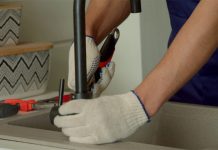Over the last few years, many workers have transitioned to working from home. Whether it’s on a hybrid or full-time basis, creating the right environment at home makes a huge difference in comfort and productivity. This article has some tips for creating the perfect space for your new at-home job.
A Changing Job Environment
There are some startling figures that reflect a shift in the job market to more at-home work, and some of the challenges that come with it. For starters, many jobs that are opening now didn’t exist before. In fact, almost 63% of job openings are positions that didn’t exist within the organization before. Plenty of those are work-from-home jobs and allow for greater flexibility in terms of schedule and location of work.
Due to the pandemic and other circumstances, the number of kids attending preschool is startlingly low. In fact, last year, only 5% of three-year-olds were enrolled, while 32% of four-year-olds were attending any kind of preschool. This means that many homework environments include kids at home all day. This is a challenge for parents trying to get work done while dealing with the distractions and needs presented by sharing an office with their kids.
Find Your Focus
The key to any successful office space is fostering an environment in which the employee can focus. Many workers in the U.S. have been adapting their homes to have office space. This is, in part, a reason for the massive growth of the worldwide home decor market, which is anticipated to reach $838.6 billion within the next five years. So, which home decor best contributes to a space in which productive work can happen?
One aspect to start with is light. Ideal office spaces have natural light — and lots of it. Artificial lighting can cause eye fatigue and headaches, but natural light is less abrasive and contributes to peaceful environments. Spaces that don’t have enough light cause a worker to have less energy.
A comfortable chair and ample desk space are also necessities for productive home offices. The chairs used in workplaces are typically ergonomically designed and allow employees to sit in a chair for many hours with as little back pain or discomfort as possible. A mistake that many workers make when they begin to work at home is thinking that they can just use a chair they have somewhere in the house, whether it’s a soft lounge chair or a plastic foldout chair.
Hours spent on a chair not made for office work will quickly or gradually lead to poor posture, pain, and back problems. In terms of desk space, it’s ideal for an employee to be able to use various parts of their desk for different activities, such as working on their computer, jotting down some notes, and reading. Mobility and space for multiple projects allow for mobility and physical perspective shifts, whereas a small desk leads to an employee feeling trapped and claustrophobic.

Finally, some aesthetic consideration should be given. There’s a reason why workplaces commonly have paintings and plants in abundance. Some fresh, intriguing elements lead to more creative thinking and cause employees to feel that they are in a fresher environment than four walls and a chair. Simple, natural plants add some color and intrigue to a space, while also giving the worker an opportunity to get up from their seat and care for the plant. A couple of minutes of diversion and a break from sitting in a chair make a huge difference. In your home, you can strategically use plants and other pieces of decor to make the home office feel set apart from the rest of the home.
The bottom line is that whether you plan on working in your home permanently or in a hybrid model, deliberate choices should be made in order to create as productive a space as possible. Feeling peaceful and focused will make all the difference in your productivity and quality of work.





